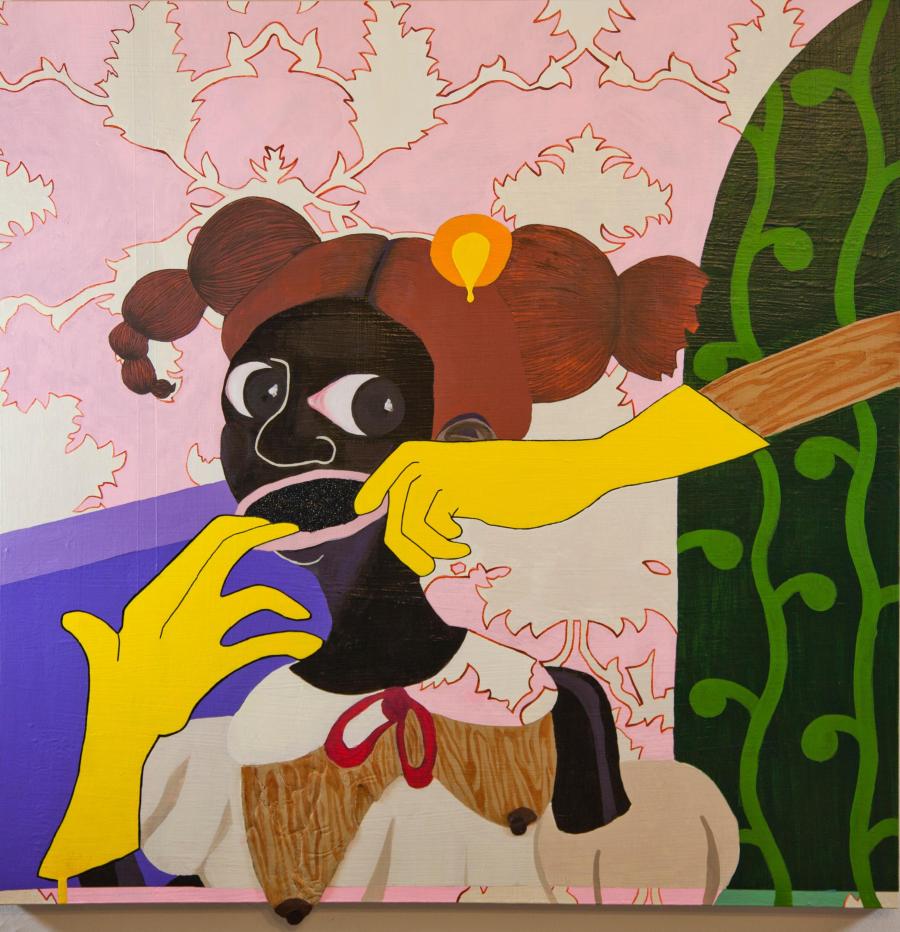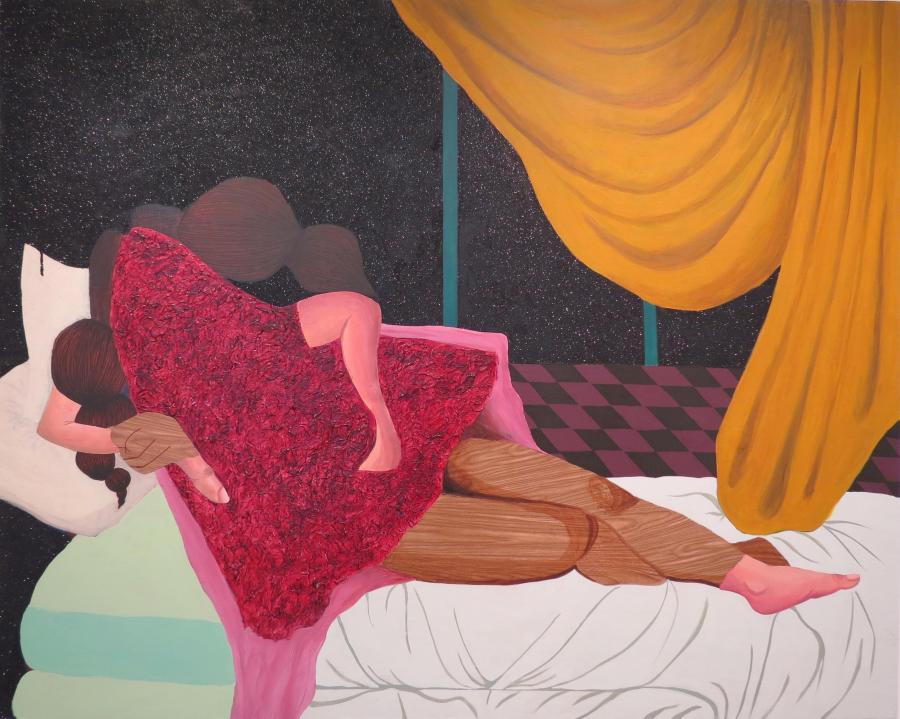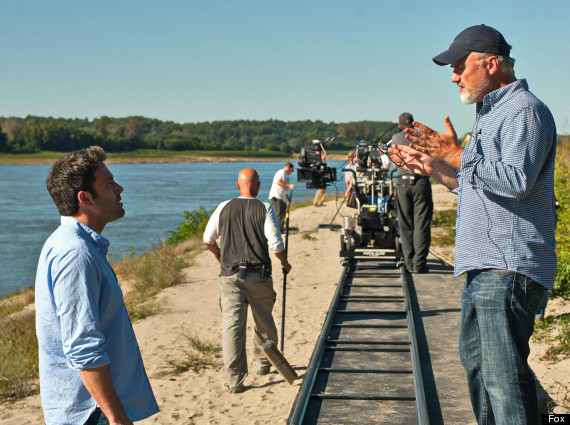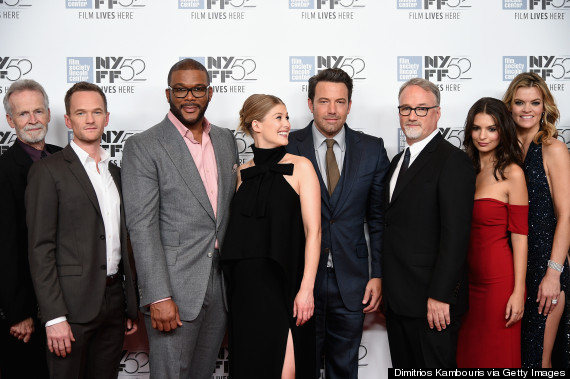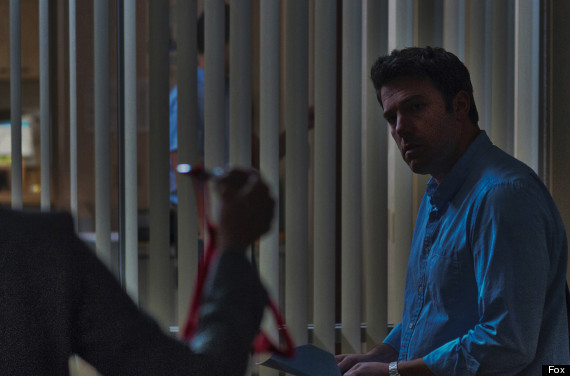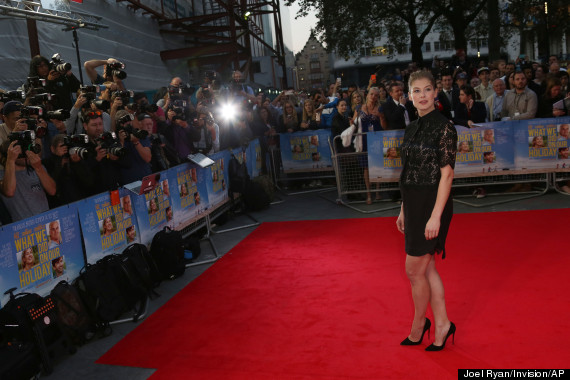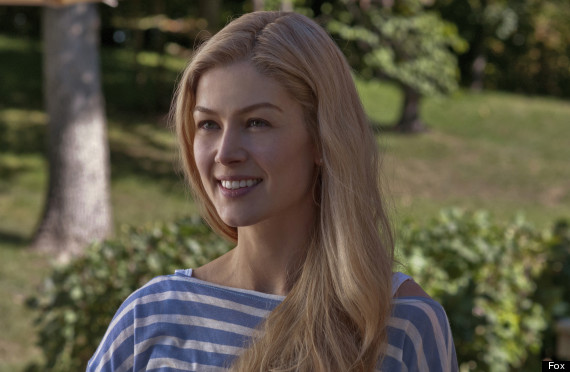The following contains some spoilers about "Gone Girl."
David Fincher's "Gone Girl" kicked off the 52nd annual New York Film Festival on Friday night with a lot of fanfare and a surfeit of positive reactions on Twitter. Starring Ben Affleck and Rosamund Pike as Nick and Amy Dunne, a married couple hiding secrets and lies from each other and themselves, "Gone Girl" is a thrilling combination of pulpy noir tropes and wicked black comedy. Affleck and Pike are powerhouses onscreen, and the film's supporting cast (especially Tyler Perry, Carrie Coon, Kim Dickens and Neil Patrick Harris) are exceptional as well. In short, this is one of the year's truly great films, a conversation starter that doubles as perfect Friday night entertainment. Following the film's New York Film Festival press screening, Fincher, Affleck, Pike, Perry, Harris and author and screenwriter Gillian Flynn participated in a press conference about their feature. Highlights from the 30-minute Q&A session are below.
1. Don't Expect To See Everything You Loved In The Book Onscreen
![gone girl gillian flynn]()
During the last nine months, much of the discussion around "Gone Girl" focused on its ending.
In January, Flynn (pictured above) told Entertainment Weekly that things were tweaked and Affleck was
"shocked" by the screenplay. "He would say, 'This is a whole new third act!'" Flynn recalled.
Flynn later walked back those comments,
and early reviews confirmed that the book's ending was retained for the feature film. Which isn't to say the "Gone Girl" denouement matches the final pages of the novel beat for beat. Flynn lost some key plot turns in the transition to screen, leading to a more streamlined conclusion that still manages to retain the book's true intentions.
"For me, I realized the important thing was to not be slavishly devoted to exactly every plot line, but to ultimately make sure it felt like the book," Flynn said during the press conference. "I was very concerned with [keeping] the tone and the dark heart of it and to not turn it into a whodunit."
Added Affleck: "What was very interesting was the book asked very hard questions about marriage and relationships. It didn't want to gloss over what we don't like to look at in others and ourselves. Sometimes you find out ugly things when you ask hard questions. That's why they're hard. [...] We wanted to give truth to Gillian's really dark look at marriage and David's subversive take on the dark look at marriage."
2. But Nick & Amy's Cat Actually Has Some Important Significance
![gone girl ben affleck]()
Characters such as Nick's parents are short-changed in the film version of "Gone Girl," but not the Dunne's cat. The house pet watches silently as the couple's marriage collapses in on itself.
"There's a screenplay book called 'Save the Cat.' It's all about making your character likable," Flynn said. "In the first 10 minutes he should do something that makes you like him. I enjoyed that in the first 10 minutes he literally saves the cat."
"And yet you still don't like him," Affleck was quick to respond.
"I liked him," Flynn said. "I love that he's so devoted to his cat."
Affleck noted that the cat was a tough customer during the five days it was on set ("half-dead" is how he described the animal). But Pike joked that she, or rather Amy, won the cat over by making crepes.
"Which I don't actually like," Flynn said about the food preparation scene. "I feel like Amy is playing Cool Girl again at that point by letting him up on the counter."
3. David Fincher Is "Not Just A Demon"
![gone girl david fincher]()
David Fincher has a reputation for being hard on actors --
just ask Jake Gyllenhaal -- but Affleck said it was a dream to work with the iconic filmmaker.
"I would have done the phone book with David, so you can imagine my relief when I read 'Gone Girl' and it wasn't just an alphabetical list of names," Affleck joked to some laughter from the crowd (there should have been more, it was funny). "It had a story and stuff."
This is the first film Affleck has made with Fincher, but don't expect it to be the last.
"I would do it again and again and again, a million times," he said of working with Fincher. "It was a joy. David, despite his reputation, is a very funny and nice guy. Not just a demon. That's the pull quote."
4. And His Desire For Many Takes Sounds Really Reasonable
![david fincher gone girl]()
As for Fincher's oft-discussed desire for multiple takes from his performers, the director had a perfectly good explanation for what it accomplishes:
I always feel it's a silly thing to talk about: what you do to actors. I don't think you ever enter into the shepherding of something that's this expensive and complicated without letting them know upfront that we're all doing this together. The pressure on the set is there before the actors show up, so everything is done. There's no re-lighting within the take. It's how many bites of apple we give the people who are perfect for the part. To make it more concise, more human, less presentational. I feel like this thing is ... inflicted. But we're doing this together. We have to work as a ballet company. [...] Everyone has to make it sing, and then you can get a lot of data across to the audience in a short period of time.
5. Men & Women View Nick In Different Ways
![gone girl]()
"Gone Girl" is the kind of divisive movie people will debate about long after it leaves theaters. (This might be the closest we get to "The Wolf of Wall Street" in 2014, at least in terms of discussion and outrage.) According to Affleck, he's already seen the discourse play out during his press obligations.
"Really what I found is that women and men have a very different reaction to this character," he said. "Most of the women journalists go, 'What was it like playing a dick?' Most of the men just go, '...
Yeah.'"
6. And Amy Is A Lot More Complicated Than You Might Think
![gone girl]()
Amy, too, is quite divisive, which is exactly how Flynn hoped she would come across onscreen.
"I see Amy as someone who knows all the tropes. She's seen the Lifetime movies. She's not afraid to use that to her will," Flynn said. "She's someone who can play any role that she wants, from the Cool Girl who men want to hang around with, to the woman men are afraid of. She's willing to kind of go there. That was what was at the center of Amy. It's basically nothing. It's someone who is made of a bundle of stories pulled together over the years."
According to Pike, who is given one of the trickiest characters in recent memory and pulls it off with an effortless aplomb, playing Amy was a lot of fun because of her multitudes and femininity.
"She's alluring, unpalatable, compelling, confounding. All those things. It goes beyond like or dislike. I understand her and like or dislike doesn't come into it," Pike said. "I'm really interested in the fact that I don't think she could have been a man. The way her brain works is purely female."
Allowing that her comments might be taken by some as negative, Pike added that most "strong female characters" in movies are either given the qualities of a man or are prone to using sex to get their way.
"Amy can do that, but it's not her
modus operandi to use sex," Pike said. "It's just one of the things she can try on."
"Basically, she's having it all," Flynn added. "She's a modern woman. Lean in."
7. Rosamund Pike Doesn't Want David Fincher To See Her New Movie
![rosamund pike]()
"Gone Girl" isn't the only movie Rosamund Pike has in theaters this fall. She also stars with David Tennant in
"What We Did On Our Holiday." Not that the actress wants Fincher to know.
"The other day I was in London seeing the premiere of a film I did right before this," Pike said. ("What We Did On Our Holiday" had its U.K. premiere on Sept. 22.) "I watched it thinking, 'Oh, God David would hate that. David would have absolutely whipped that out of me.' I think you have pre- and post-Fincher in your work."
8. And It's A Good Thing She Doesn't Have Any Siblings
![gone girl]()
Amy Elliott is an only child in "Gone Girl," and it's a trait Fincher realized was key to his casting process. Fortunately, Pike fit the description.
"It's this hermetically sealed socialization," Fincher said about why it was so important for the actress and character to share the same familial structure. "It's just a different thing."
Added Pike: "Weird kid."
Countered Fincher: "No. Just off."
9. Finally, In An Alternate Universe, This Could Have Been Ben Affleck's "Gone Girl"
![gone girl]()
When asked why he cast Ben Affleck to play Nick Dunne, Fincher joked it was because the actor "was available." Except not really: As Fincher noted, Affleck had to "shut down his movie at Warner Bros. and send all the people he had hired home."
That film was "Live By Night," and Affleck is set to direct it for Warner Bros. following his stint as Batman.
It turns out, however, that Affleck could have directed "Gone Girl" too. "He had already read the book because, I guess he didn't want to tell me, but Fox maybe offered it to him," Fincher revealed during the press conference.
In the end, neither that possible offer nor "Live By Night" made a difference when it come to hiring Affleck. Said Fincher: "Just because it's perfect casting, doesn't mean you shouldn't do it."
"Gone Girl" opens nationwide on Oct. 3.





